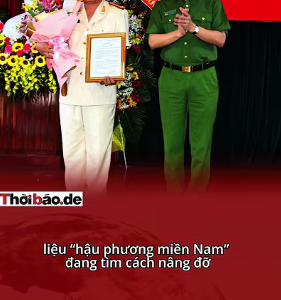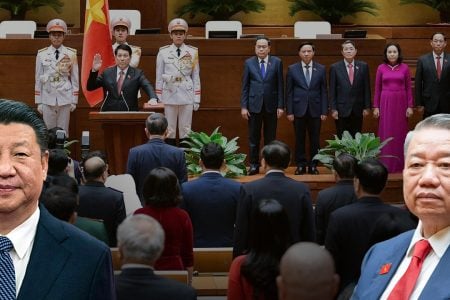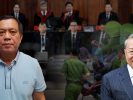In the context of China taking advantage of the Covid-19 pandemic to overwhelm the lawful sovereign states in the East Sea (South China Sea), a question arises if armed conflict occurs in the disputed waters between Vietnam and China, what the result will be like?
In terms of force relations, it is clear that the world’s most populous country, the second economy of the globe, is that China has a bid advantage compared with Vietnam.
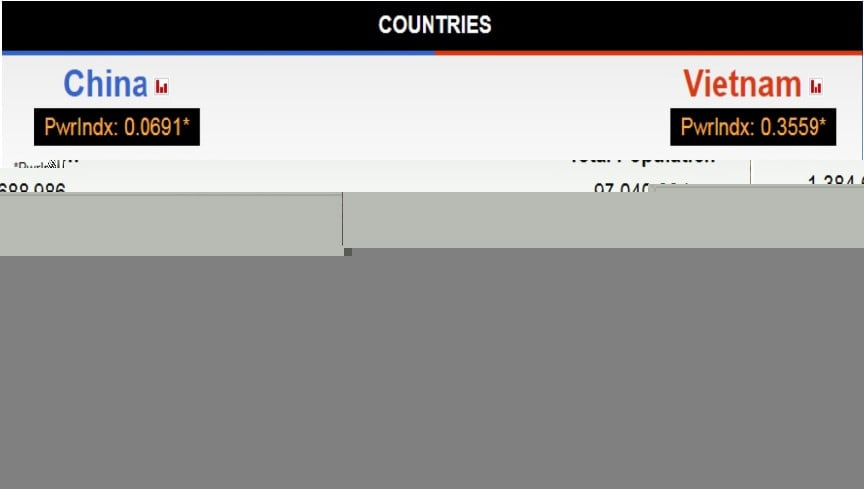
Vietnam’s defense budget is expected to increase annually by 9.43% over the period 2020-2024, to reach $7.9 billion by 2024. However, China’s defense budget is up to $228 billion, which is almost 29 times higher than Vietnam’s defense budget.
The number of soldiers between the two countries is also different: Vietnam has about 482,000 active soldiers, while China has nearly 2.3 million, which is nearly 5 times that of Vietnam.
Many other data also show the difference: Vietnam has 2,575 tanks compared with 13,050 Chinese vehicles; 6 submarines compared to 76 Chinese submarines; 64 warships of all kinds compared to 714 Chinese ships, of which Vietnam does not have aircraft carriers and destroyers like China.
In a ranking published in 2020, Global Firepower ranked China third in the 138 military force in the world after the US and Russia.
In this ranking, the Vietnamese military is ranked 22nd out of 138 military forces in the world, up 1 rank compared to 2019.
Avoiding and not being able to confront China and Vietnam directly, but resolutely but cleverly in the struggle to protect sovereignty. According to some experts, Hanoi is skillfully opening three fronts against China: strengthening its military capabilities, fighting diplomatically and reducing its dependence on Beijing.
In an interview with RFI, researcher Laurent Gédéon, a lecturer at Lyon Pedagogy School, said that if there was a conflict between Vietnam and China, it would probably take place at sea and most likely on the two archipelagos namely the Hoang Sa (Paracels) and the Truong Sa (Spratlys).
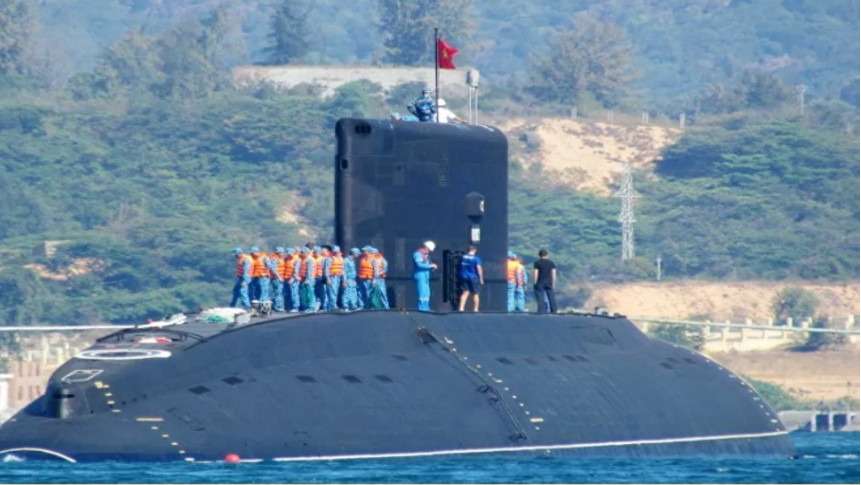
According to Mr. Gédéon, if based on the reality of the current maritime conflict, not only in the East Sea in general, but also in Vietnam’s waters, and in this hypothesis, the Vietnamese navy will maintain a defensive position, mainly against the actions of the Chinese military, and will take actions that are intended to help them retain their technical advantage, regardless of the asymmetrical context with their opponents.
Therefore, in recent years, Vietnam has purchased many military equipment to balance vehicles. We can see this in many areas, such as the purchase of six submarines, though only relative, but also helps Hanoi increase deterrence compared to Chinese forces.
In addition, Vietnam has also deployed many important tracking devices, including unmanned aerial vehicles, new generation radar systems, on-site forces and aircraft.
The Vietnamese military has made an outward development, through the strategy of Anti-Access / Anti-Intrusion (Anti-Access / Area Denial, A2 / AD), a concept not previously available in Vietnam. This strategy aims to protect the islands that Vietnam controls in the Truong Sa and along the coast of Vietnam. This strategy also contributes to increasing Vietnam’s defensive capabilities, through the development of short- and medium-range missile systems, which Hanoi has equipped much in recent years.
Mr. Gédéon said that in the event of a direct confrontation with the Chinese army, Vietnam would not achieve military victory, even though the Vietnamese army has many strategies. But Vietnam will probably make it difficult for China and will make a Chinese attack less effective.
The French researcher assessed the long-standing lobbying diplomacy that Vietnam has pursued as a balancing factor, a way to offset the gap with China.
He analyzed: Hanoi seeks to develop relations, at least militarily, with many partners as strategic partnership with Japan.
Another example is that the relationship with the United States has been greatly enhanced. This is not surprising considering the similarities in interests between the two countries, as both are concerned about Beijing’s expansionist intent in the East Sea.
It is clear that the US side will continue and increase this dynamic in the future, along with the number of US military equipment supplied to Vietnam has doubled since the embargo was lifted in May 2016.
Since then, Hanoi has purchased many unmanned aircraft, coasters and many other equipment.
In addition, Vietnam has strengthened military cooperation with many other countries, such as Australia, India, as well as many European countries.
In any case, this is a strategy that needs to be implemented carefully because Hanoi’s goal is to increase military capabilities but not to be dependent on one or more partners. In addition, this strategy should not be interpreted by China as a threat.
Therefore, Vietnam seeks to develop its defenses and adjust its claims within the scope of its sovereignty framework, as has been done in the past decades, without including areas not covered by claims. before.
In addition, in terms of trade, Hanoi must also consider that China is Vietnam’s leading trading partner. China is also the fifth largest investor in Vietnam with nearly $2.5 billion in 2018. These are some of the factors that make Vietnam’s strategy quite delicate. That strategy is not not applicable but needs to be implemented very carefully by Hanoi and that is what Vietnam is doing effectively.
Besides persistently implementing the “Three Nos” policy (not participating in military alliances, not being a military ally of any country; not allowing any country to set up military bases in Vietnam; not relying on one country to fight the other) from 1998 up to now, Vietnam has also implemented “partnerships” with countries on different levels.
The „three no“ policy first appeared in the Defense White Paper in 1998, then was frequently mentioned, in 2004 and 2009, and continued to be mentioned in the new Defense Law, which came into effect on January 1, 2019.
Although it is imperative to „three not“ but actually this policy is not completely binding. And Vietnam has exploited this aspect from a „partner“ perspective. There are three types of „partners“ that are comprehensive strategic partners, strategic partners and comprehensive partners. Specifically, Vietnam has a comprehensive strategic partnership with Russia, India and China; Strategic partnerships with Japan, Australia, France and comprehensive partnerships with the United States. It is noteworthy that none of these partners has the name „military alliance.“
It can be seen that Vietnam strengthened its defenses, as well as military cooperation with many of the great powers involved in preserving the world order, and these were forces that, for various reasons, were suspicious of China.
Mr. Gédéon said that the „three no“ policy did not prevent Vietnam from having military agreements, but it was unlikely for Vietnam because it was restricted to sovereignty claims.
What we can say is that Vietnam has both strengthened its means and worked directly with Beijing on confidence-building measures to prevent China from dominating the entire East Sea.
But Vietnam must also prepare itself in the event of increased stress. And Hanoi is doing this by strengthening relations with the parties, in fact, more or less Beijing’s rivals. Vietnam must take into account the party’s strongest and most military commitment, that is, the United States and the United States have their own specific goals and geopolitical challenges.
And this situation needs to be considered with many questions: Can Vietnam regain the islands that Hanoi claims without involving in military conflict, and that conflict is caused by other factors? initiated, eg USA? Does the current conflict between Beijing and Washington, if further increases, give Vietnam the opportunity not to be swept away or not? Another question arises: Will US commitments, in the case of improved relations with Beijing, be an ‚end‘ to Vietnam’s demands for sovereignty over the Hoang Sa and Truong Sa?
Thus, to regain sovereignty over some islands, there may be an armed conflict but that armed conflict will lead Vietnam to abandon a basic principle of the policy in its foreign affairs.
Mr. Gédéon said that Vietnam’s opposition to diplomacy is politically determined and not seeking to use force is a wise strategy.
He said: this strategy is probably the best because avoiding direct confrontation, avoiding pushing Vietnam into an offensive position, not as advantageous in defense. And this strategy also allows Hanoi to maintain the image of “restraint, legitimacy” before the action of being considered “invasion” of Beijing. And this action is positive in the context of China’s image being deteriorated around the world.
In another development, Derek Grossman, a senior defense analyst at the US center of Rand Corporation, a former adviser to the assistant secretary of US Defense in charge of Asia-Pacific, said: „At some point, the Chinese military will need to test (on the battlefield) their new capabilities – and Vietnam could be considered the preferred opponent.“
Grossman gave three reasons for this hypothesis.
First, the battlefield of Vietnam and the East Sea is favorable for an air and naval war, the war that Beijing is expected to face today, whether against Taiwan or another regional opponent in the East Sea or East China Sea, not an infantry war like the 1979 war in the northern border of Vietnam that China shamefully lost.
Second, the war with Vietnam will be the least likely to draw the US into the war because Vietnam and the United States do not have a security treaty, while with other countries and territories where China has disputes, the US is an official or unofficial security alliance such as the US-Japan security treaty, the US-Philippines General Defense Treaty or the US Taiwan Relations Act.
Third, Vietnam can be easily defeated due to its inability to maintain activities on par with China.
Many international experts consider that the best option that Vietnam is still working on is building comprehensive partnerships with countries that can support Vietnam.
It may not be necessary to provide military support but at least diplomatically, create a position for Vietnam in the international arena.
Faced with the situation that the three countries of Vietnam, the Philippines and Malaysia are frequently bullied by China and only object to and closely monitor the activities of Chinese vessels due to the disparity in military potential, Research Director The Institute of Strategic Studies of the French Military School (IRSEM) Benoît de Tréglodé also suggested that the three ASEAN countries should sit down together, discussing the sovereignty disputes of the three countries to be able to join forces against China.
There may be many methods to resolve the sovereignty dispute between Vietnam and China in the East Sea, but the most important is the determination of the Vietnamese authorities and the solidarity of the entire nation. Patriotism; the desire for independence and freedom; The iron will to protect the national sovereignty of the Vietnamese people has been proven over four thousand years of history. And the remaining prerequisite element is the determination of the leadership of the ruling Communist Party of Vietnam to continue to see whether they will implement in the near future.
Thu Thuy from Hochiminh city – Thoibao.de (Translated)



